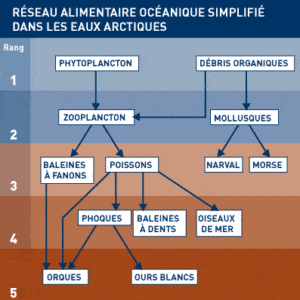The Canadian Coast Guard plays a crucial role in protecting our vast maritime areas. Its commitment to technological innovation allows for effective responses to contemporary challenges. Through the continuous consolidation of oceanographic data, it improves the resolution of the most complex oceanic issues.
The close collaboration with the United States Coast Guard enhances intervention capabilities in strategic areas such as the Great Lakes. The integration of ANAFI USA drones by the U.S. Coast Guard illustrates a major advancement in aerial and maritime surveillance. The renewal of the Canadian fleet, backed by a $29 million investment over five years, reflects the commitment to a modern and efficient infrastructure. Furthermore, officer training programs foster a community dedicated to saving lives and protecting the marine environment.
Table of Contents
ToggleRegent’s electric seagliders: a revolutionary innovation
In the field of marine technology, innovations continually push the boundaries of what is possible at sea. Regent establishes itself as a key player with the development of its fully electric seagliders. These hybrid vessels, combining sail and electric propulsion, promise to transform maritime operations through their efficiency and reduced environmental impact. Unlike traditional boats that primarily rely on combustion engines, Regent’s seagliders utilize natural marine energy for navigation while being assisted by electric motors when wind conditions are unfavorable.
This dual propulsion source not only saves fuel but also significantly reduces greenhouse gas emissions. The electric seagliders offer extended range, thus facilitating long missions without requiring frequent recharges. Additionally, their lightweight and aerodynamic design ensures better maneuverability and increased speed, meeting the complex demands of U.S. Coast Guard operations. By integrating these advanced technologies, Regent positions itself at the forefront of the energy transition in the maritime sector.
Why is the U.S. Coast Guard hesitant?
Despite the numerous advantages of electric seagliders, the U.S. Coast Guard remains hesitant about their approval. Several factors explain this reluctance, primarily related to security, reliability, and compliance with strict existing regulations. The Coast Guard plays a crucial role in protecting territorial waters, combating illegal fishing, and conducting maritime rescue operations. However, the integration of new technologies must be carefully assessed to ensure they meet the high operational standards necessary for these critical missions.
One of the main obstacles is the need to ensure that the electric seagliders can operate effectively in varied and often extreme weather conditions. The reliance on electric propulsion also raises questions about the reliability of the systems in case of technical failure. Moreover, the approval process involves rigorous testing and certifications that can require significant time and resources. Thus, Regent must convincingly demonstrate the robustness, safety, and efficiency of its seagliders to earn the trust of the U.S. Coast Guard.
The environmental benefits of electric seagliders
Regent’s electric seagliders present significant environmental advantages, which is a major asset in the current context of combating climate change. By reducing dependence on fossil fuels, these vessels help to decrease the carbon footprint of maritime operations. Furthermore, the use of renewable energies, such as wind energy captured by the sails, helps to reduce greenhouse gas emissions and preserve air quality. This approach aligns with a broader sustainability strategy adopted by many institutions and governments to achieve global climate goals.
Additionally, electric seagliders minimize noise and vibrations, which is crucial for marine wildlife. Electric motors, being quieter than their combustion counterparts, limit sound disturbances that can affect marine habitats and sensitive animal populations such as whales and dolphins. This environmentally friendly approach enhances Regent’s legitimacy with nature protection agencies and coastal communities while offering a greener alternative to traditional naval units.
The Coast Guard approval process: steps and challenges
Obtaining approval from the U.S. Coast Guard for the electric seagliders requires navigating through a complex and rigorous evaluation process. This process is designed to ensure that all new technologies meet the essential safety, performance, and reliability standards needed for Coast Guard missions. Key steps include sea trials, thorough technical evaluations, and detailed documentation demonstrating compliance with existing regulations.
Real-world testing
Electric seagliders must undergo a series of real-world tests to prove their efficiency and reliability. These trials include simulated rescue missions, coastal patrols, and maritime pollution control operations. Each test is meticulously analyzed to identify potential improvements and ensure that the vessels can operate optimally in varied and often hostile environments.
Another major challenge is the integration of electrified systems with existing Coast Guard infrastructures. This involves not only technical adaptations but also adequate training for operators who will need to master the new technologies. Regent must work closely with Coast Guard engineers and decision-makers to ensure that the seagliders integrate seamlessly into existing operational procedures while providing tangible improvements.
Testimonials from maritime professionals on electric seagliders
Feedback from maritime professionals plays a crucial role in evaluating the adoption of electric seagliders. Many sailors and ship captains express a growing interest in these innovative vessels, highlighting their potential to improve the efficiency of operations while reducing costs and environmental impact. A Coast Guard commander stated: “Electric seagliders represent a major advancement. Their ability to operate quietly and reduce emissions is a real breath of fresh air for our environmental surveillance and protection missions.”
Moreover, marine technology experts emphasize the technical advantages of electric seagliders. According to Dr. Isabelle Martin, marine propulsion engineer, “Regent’s innovation in electric sail systems paves the way for a new era of sustainable navigation. Seagliders are not only eco-friendly, but they also offer unprecedented operational flexibility thanks to their dual propulsion.”
These positive testimonials reflect the gradual acceptance of electric seagliders in the maritime sector. However, they also highlight the need to continue demonstration and training efforts to fully integrate these innovative technologies into the forces of the U.S. Coast Guard.
The potential impact of electric seagliders on Coast Guard operations
The adoption of electric seagliders by the U.S. Coast Guard could significantly transform its operations. By optimizing energy efficiency, these vessels allow the Coast Guard to extend mission duration without worrying about frequent stops for refueling. This translates to an increase in operational range and a better response to emergencies at sea.
Additionally, electric seagliders offer better discretion during patrols, which is crucial for surveillance and discreet intervention missions. Their ability to move quietly reduces the risk of disrupting illegal activities such as unauthorized fishing or drug trafficking, allowing for more effective and less detectable observation of offenders.
In terms of training and equipment, the integration of electric seagliders requires an upgrade in crew skills. Operators must be trained not only in handling sail and electric propulsion systems but also in maintaining and troubleshooting these advanced technologies. This necessitates an initial investment in training and equipment, but the long-term benefits in terms of reduced operational costs and improved environmental sustainability far outweigh this effort.
The future prospects for electric seagliders
As environmental concerns and operational requirements evolve, Regent’s electric seagliders are well-positioned to meet these challenges. Continuous advancements in energy storage technologies and lightweight materials promise to further improve the efficiency and performance of these vessels. Moreover, the increasing demand for sustainable maritime solutions opens up new opportunities for the expansion of their use beyond the Coast Guard.
Regent also envisions collaborating with other institutions and companies in the maritime sector to develop additional applications for electric seagliders, such as environmental monitoring, transportation of goods









